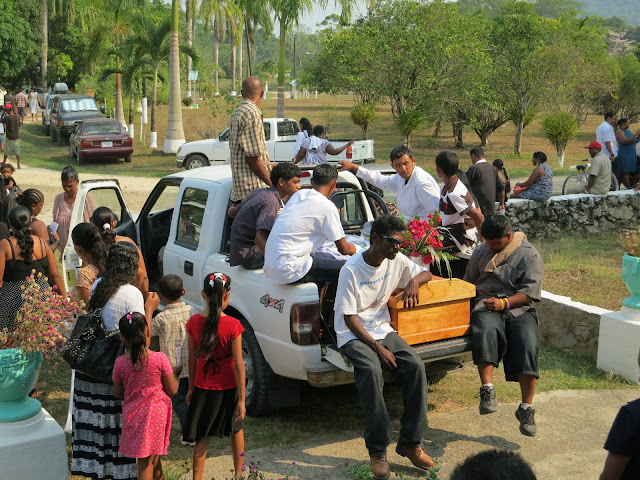Not every day is interesting here in Belize but today was definitely one that was. I went out on mobile clinic to the Mopan Maya village of San Jose which is over an hour and a half away from our main clinic. I always like going to San Jose because even though it is one of our busier clinics, the drive there and the village itself is beautiful. We set up our clinic in the health outpost building there and saw our regular patients.

At 1:00 pm, I was getting ready to send part of my team up to the school to do our dental program and fluoride varnish application on grades Infant 1 and 2 when someone came running down from the school. They asked for a doctor to come quickly as a boy had fallen and hurt his leg. I have a young doctor who just arrived this past weekend from the U.K., Stephanie Jordan, on my team and she offered to go. It was not long before she sent someone to come and get me to help. By the time I got up to the school, they had carried Asa, 8 years old, into one of the classrooms and a lot of the village had already arrived. There were actually so many villagers at the school and crowding into the classroom initially, I could not get in to see him. Just about everyone in the village had come to see what was happening.
After the principal cleared the way for me to get in, it was obvious that he had broken his left femur. Dr. Jordan's comment to me was that she had clinically thought it that it was fractured but wondered how an eight year old boy who is small by our standards, could have fractured his femur after just falling in the schoolyard? It was a good question but this is the second femur fracture that I have seen since I have been here in an eight year old boy who simply fell at school. (I have a theory that the children in this area are subject to more significant fractures due to their nutritional deficiencies.) Regardless, it was something that we could help with.
Fortunately his leg was still neurovascularly intact but it was grossly displaced. By this time, he also looked to be in shock. I climbed up on top of the Land Cruiser to get some needed supplies and we sent someone for a board. One of the villagers returned fairly quickly with a board from the side of their house. We were able to start an IV and get fluids going, give him a dose of Tylenol and then work at immobilizing him on the board. Using the white sheet we use for privacy when we do pelvic exams in the villages as well as some triangular bandages and tape, we were able to immobilize and stabilize his leg and him to the board.
While I was doing this, our driver Mr. Rudy had to drive to the top of another hill, climb on top of the Land Cruiser for a cell signal and call our clinic for a back-up vehicle. The district only has one working ambulance right now and they don't send it out to the villages as they need to keep it available for transfers to the referral hospitals in Dangriga or Belize City. Since the bus that runs three times a week out of the village to Punta Gorda did not leave until the following morning, we were his only way out for care at that point. We loaded him and his father in the back of our Land Cruiser as well as half of our team. The other half stayed to be picked up by another driver.

We drove him to the hospital in Punta Gorda and were able to help transfer him to the x-ray room and then into the emergency room. It was so nice to have the availability of an x-ray as we have been without it until just last month. The x-ray confirmed our clinical diagnosis - a spiral left femur fracture with overriding and rotation. The Belizean doctor in the emergency room began to arrange for his transfer up to Belize City (7 hours by ambulance) for care.
While it was not a good day for Asa, it was an interesting day for me and my team and left us with a positive feeling that we were able to facilitate medical care for Asa here in Belize.





















































